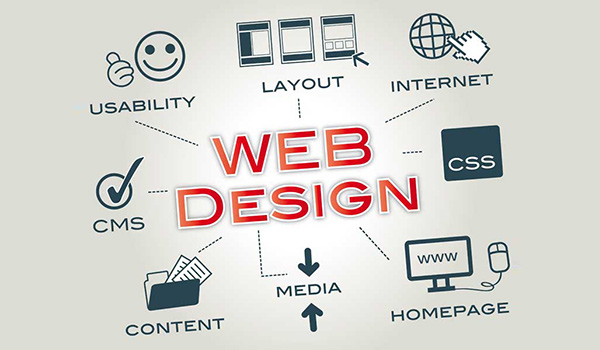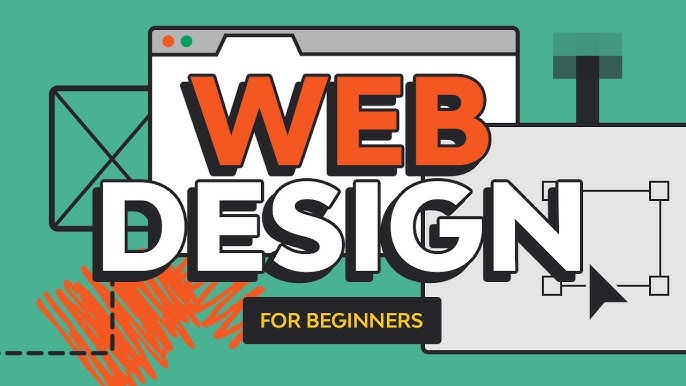Aligned Position Web Design: Building Responsive, Mobile-Friendly Websites for Modern Users
Aligned Position Web Design: Building Responsive, Mobile-Friendly Websites for Modern Users
Blog Article
The Very Best Kinds Of Web Design to Enhance Customer Experience and Engagement
In the ever-evolving landscape of electronic communication, the performance of Web design dramatically influences individual experience and engagement. Numerous style approaches, such as minimal, responsive, and interactive formats, each offer one-of-a-kind advantages that can cater to varied customer requirements.
Minimalist Web Layout
As electronic landscapes end up being increasingly cluttered, minimal website design has actually become a powerful approach to enhancing customer experience. This layout ideology focuses on simpleness, concentrating on vital elements while getting rid of unnecessary disturbances. By using enough white area, uncomplicated navigating, and a restricted shade palette, minimal style fosters clarity and guides individual interest to vital content.
The core principle of minimalist Web design is to produce a smooth interaction for users. By decreasing cognitive tons, users can promptly realize details without feeling bewildered. This direct approach not just enhances functionality but likewise encourages involvement, as visitors are most likely to discover a site that is very easy and aesthetically attractive to browse.
Additionally, minimalist style usually emphasizes typography and imagery, utilizing these components purposefully to convey messages efficiently. In essence, minimalist Web design is not just a pattern; it is a thoughtful technique that identifies the importance of user-centered layout.
Responsive Web Design
In today's diverse digital environment, responsive Web layout has actually become important for producing a seamless individual experience throughout a wide variety of tools. As customers accessibility internet sites on mobile phones, desktop computers, laptops, and tablets, the capacity of a site to adapt its format and material to various display dimensions and resolutions is crucial.
Receptive website design uses versatile grids, photos, and CSS media inquiries to guarantee that Web content is presented optimally, despite the gadget used. This strategy not only enhances the aesthetic appeal of an internet site yet also considerably boosts functionality. Users are more most likely to engage with a site that uses a consistent experience, as it removes the stress of needing to zoom in or scroll excessively.
By embracing receptive design, organizations can improve their exposure and get to a broader audience. In summary, responsive Web layout is an essential method that improves customer experience, interaction, and total complete satisfaction.
Interactive Web Design
Responsive Web layout prepares for improving individual experience, but interactive Web layout takes this an action additionally by engaging individuals in a more dynamic method - Aligned Position Web Design. By including elements such as computer animations, clickable models, and real-time comments, interactive website design captivates individuals, drawing them right into a richer surfing experience
This technique not just cultivates interaction yet also encourages individuals to discover material proactively as opposed to passively consuming it. Methods such as gamification, where customers make rewards for completing jobs, can substantially enhance the time invested on a site and enhance overall complete satisfaction. Moreover, interactive attributes can streamline complex information, making it a lot more absorbable and enjoyable.

Including interactive style aspects can additionally bring about greater conversion prices, as users are more probable to engage with a site that proactively read entails them. Aligned Position Web Design. Eventually, interactive Web style changes customer experiences right into memorable trips, making certain that site visitors return time after time
Flat Layout
Characterized by its minimalistic approach, flat layout highlights simpleness and performance, stripping away unnecessary aspects and concentrating on essential attributes. This layout viewpoint focuses on use, ensuring that users can navigate user interfaces effortlessly and performance. By utilizing a tidy visual, level design removes the clutter often located in a lot more ornate styles, therefore boosting user concentrate on material and capability.
The characteristic of level layout lies in its use of strong shades, easy typography, and geometric shapes. These elements add to a visually appealing interface that is both modern-day and approachable. Furthermore, flat style promotes a sense of quality, allowing individuals to discern important actions and info without diversion.
Furthermore, level layout is especially reliable in receptive website design, as its simpleness translates well throughout numerous gadgets and display sizes. The absence of intricate structures and slopes reduces loading times, which is important for preserving customer interaction. As electronic landscapes remain to advance, flat layout remains a pertinent selection for developing easy to use web sites that improve total experience. By concentrating on crucial attributes, flat see this here style not just fulfills user requirements yet likewise urges smooth communication, making it a crucial part of reliable Web design approaches.
Adaptive Web Style
Flexible Web style personalizes the user experience by creating numerous fixed designs tailored to different screen sizes and devices. Unlike receptive layout, which fluidly readjusts a solitary format, flexible style utilizes unique designs for particular breakpoints, ensuring optimal presentation on various systems. This strategy permits developers to focus on the distinct attributes of each device, enhancing use by supplying specifically what individuals need based on their context.
One of the key benefits of adaptive Web layout is its capacity to enhance load times and efficiency. By serving customized content and images that fit the customer's gadget, sites can minimize information use and enhance loading speeds. This is specifically valuable for individuals with slower connections or limited information strategies.

Furthermore, flexible layout promotes an extra controlled and consistent branding experience. Considering that designers create numerous designs, they can guarantee that the visual components straighten with the brand's identity throughout different systems - Aligned Position Web Design. This leads to a cohesive customer experience, improving engagement and advertising individual retention
Conclusion
Minimal design fosters clearness and focus, while receptive design guarantees flexibility throughout numerous devices, promoting accessibility. Jointly, these layout approaches contribute to the development of easy to use atmospheres that not just boost satisfaction but also drive higher conversion prices, emphasizing their crucial value in modern Web style methods.

Minimalist style promotes clearness and focus, while responsive design guarantees adaptability across numerous tools, advertising availability. Collectively, these design approaches contribute to the creation of user-friendly environments that not just boost contentment yet additionally drive higher conversion prices, emphasizing their essential relevance in modern Web design strategies.
Report this page